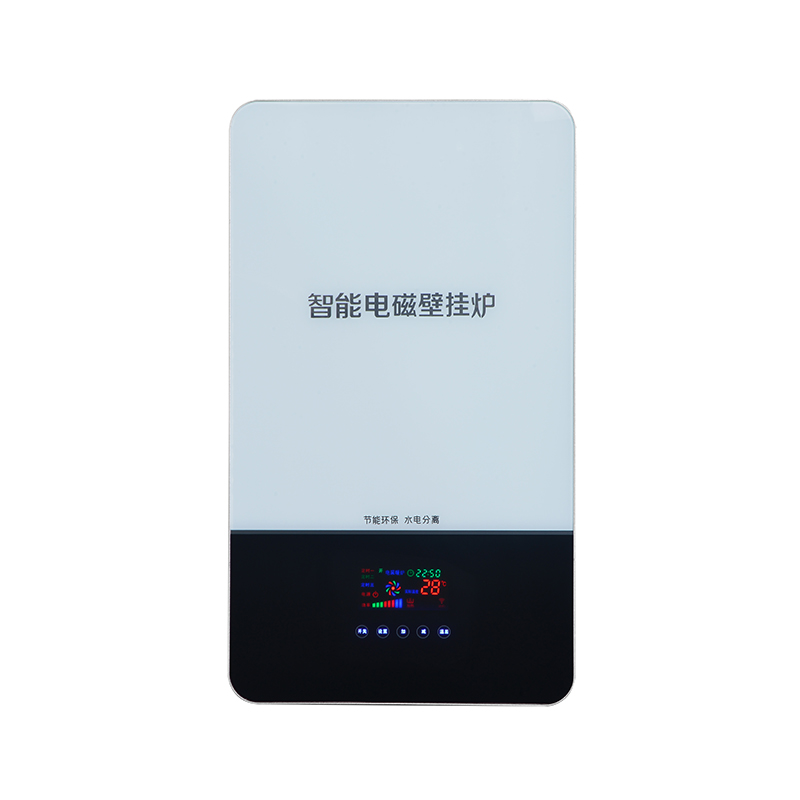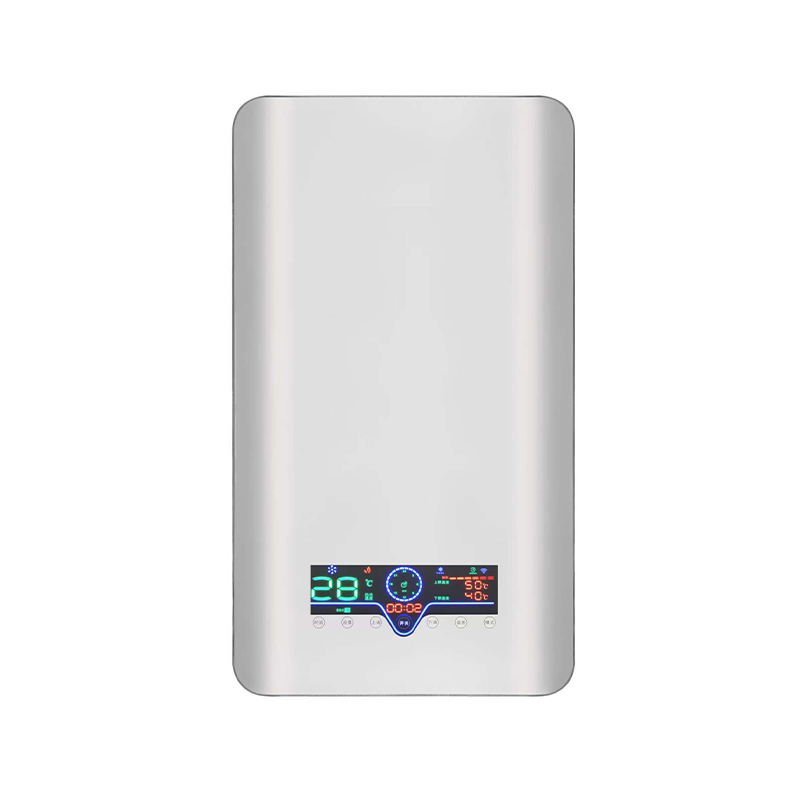How does an electromagnetic heating furnace flat type achieve intelligent variable frequency control?
Release Time : 2025-07-30
Electromagnetic heating furnace flat types utilize intelligent variable frequency control technology to achieve high efficiency, energy conservation, and precise temperature management. This advanced control method not only improves overall equipment performance but also provides users with a more convenient and comfortable user experience. Understanding how intelligent variable frequency control works for electromagnetic heating furnace flat types, from basic principles to practical applications, will help us better utilize this innovative technology.
First, the core of intelligent variable frequency control lies in its ability to dynamically adjust power output based on actual demand. Traditional heating equipment typically uses a fixed power mode, maintaining a constant output power regardless of current environmental conditions or demand. This approach is not only inefficient but also fails to meet the precise temperature control requirements in various scenarios. In contrast, intelligent variable frequency control automatically adjusts heating power based on real-time temperature monitoring, ensuring optimal operating conditions at all times. For example, during the initial heating phase, the system rapidly increases the temperature at maximum power. As the set temperature approaches, the power is gradually reduced to avoid overheating and maintain stability.
Second, implementing intelligent variable frequency control relies on advanced sensor technology and microprocessors. Modern flat-type electromagnetic heating furnaces incorporate a variety of high-precision sensors for real-time monitoring of key parameters such as temperature, current, and voltage. These sensors transmit the collected information to a central processing unit, which analyzes it using complex algorithms and makes appropriate control decisions. Simultaneously, a microprocessor coordinates the operation of various components to ensure stable operation of the entire system. This intelligent design enables the induction furnace to not only respond to changes in the external environment but also self-optimize, continuously improving energy efficiency.
Furthermore, intelligent variable frequency control significantly enhances the user experience. Users can easily set the desired temperature and operating mode via a touchscreen interface or mobile app. Whether requiring precise temperature control for daily cooking or special occasions, the intelligent control system swiftly responds and executes the instructions. Furthermore, some high-end models support preset functions, allowing users to pre-set heating schedules for the day, truly controlling the kitchen temperature to their liking. This highly flexible operation not only simplifies the process but also enhances user engagement and satisfaction.
In addition to improving convenience, intelligent variable frequency control also helps save energy. Because the system precisely adjusts power output based on actual demand, unnecessary energy waste is avoided. For example, under low load conditions, the device automatically reduces power consumption. If rapid heating is required, it quickly increases power to ensure efficient heating. This dynamic adjustment mechanism not only improves energy efficiency but also saves households money on electricity bills. The energy savings are particularly significant for long-term industrial equipment, helping to reduce operating costs and promote sustainable development.
Safety is also a key feature of intelligent variable frequency control. The electromagnetic heating furnace flat type incorporates multiple safety measures, including overheat protection, dry-boil protection, and leakage protection. These features are tightly integrated with the intelligent control system. Upon detecting an abnormality, the system immediately takes appropriate action, such as shutting off power or issuing an alarm, to ensure the safety of the equipment and users. Furthermore, the water-electricity separation design further enhances product safety, effectively preventing short circuits or electric shocks caused by water leaks, providing users with greater peace of mind.
Smart connectivity is another key feature of modern electromagnetic heating furnace flat types. Through Wi-Fi or Bluetooth connectivity, users can remotely monitor and control the status of the electromagnetic heating furnace anytime, anywhere via a smartphone or other smart device. Whether at the office or traveling, with just a few taps on the screen, you can check the current temperature, adjust the setpoint, or start/stop the heating process. This seamlessly integrated lifestyle not only improves quality of life but also lays a solid foundation for the future development of smart homes.
Finally, with the advancement of artificial intelligence technology, future electromagnetic heating furnace flat-type systems are expected to have stronger learning capabilities. By continuously accumulating information about user habits and preferences, the system can autonomously learn and anticipate user needs, providing more personalized services. For example, it can automatically adjust the daily heating schedule based on historical data, even preheating according to the weather forecast, ensuring optimal performance every time. This forward-looking design not only enhances the user experience but also adds more possibilities to the smart home ecosystem.
In summary, through intelligent variable frequency control, the electromagnetic heating furnace flat-type system achieves efficient, energy-saving, and precise temperature management. It not only simplifies operation and enhances the user experience, but also significantly improves energy efficiency and safety. As technology continues to advance, we can expect the addition of more innovative features, making the electromagnetic heating furnace an indispensable smart assistant in every home. Whether in daily life or industrial production, intelligent frequency conversion control provides unlimited possibilities for creating an ideal working environment and opens a new chapter of high efficiency and energy saving.
First, the core of intelligent variable frequency control lies in its ability to dynamically adjust power output based on actual demand. Traditional heating equipment typically uses a fixed power mode, maintaining a constant output power regardless of current environmental conditions or demand. This approach is not only inefficient but also fails to meet the precise temperature control requirements in various scenarios. In contrast, intelligent variable frequency control automatically adjusts heating power based on real-time temperature monitoring, ensuring optimal operating conditions at all times. For example, during the initial heating phase, the system rapidly increases the temperature at maximum power. As the set temperature approaches, the power is gradually reduced to avoid overheating and maintain stability.
Second, implementing intelligent variable frequency control relies on advanced sensor technology and microprocessors. Modern flat-type electromagnetic heating furnaces incorporate a variety of high-precision sensors for real-time monitoring of key parameters such as temperature, current, and voltage. These sensors transmit the collected information to a central processing unit, which analyzes it using complex algorithms and makes appropriate control decisions. Simultaneously, a microprocessor coordinates the operation of various components to ensure stable operation of the entire system. This intelligent design enables the induction furnace to not only respond to changes in the external environment but also self-optimize, continuously improving energy efficiency.
Furthermore, intelligent variable frequency control significantly enhances the user experience. Users can easily set the desired temperature and operating mode via a touchscreen interface or mobile app. Whether requiring precise temperature control for daily cooking or special occasions, the intelligent control system swiftly responds and executes the instructions. Furthermore, some high-end models support preset functions, allowing users to pre-set heating schedules for the day, truly controlling the kitchen temperature to their liking. This highly flexible operation not only simplifies the process but also enhances user engagement and satisfaction.
In addition to improving convenience, intelligent variable frequency control also helps save energy. Because the system precisely adjusts power output based on actual demand, unnecessary energy waste is avoided. For example, under low load conditions, the device automatically reduces power consumption. If rapid heating is required, it quickly increases power to ensure efficient heating. This dynamic adjustment mechanism not only improves energy efficiency but also saves households money on electricity bills. The energy savings are particularly significant for long-term industrial equipment, helping to reduce operating costs and promote sustainable development.
Safety is also a key feature of intelligent variable frequency control. The electromagnetic heating furnace flat type incorporates multiple safety measures, including overheat protection, dry-boil protection, and leakage protection. These features are tightly integrated with the intelligent control system. Upon detecting an abnormality, the system immediately takes appropriate action, such as shutting off power or issuing an alarm, to ensure the safety of the equipment and users. Furthermore, the water-electricity separation design further enhances product safety, effectively preventing short circuits or electric shocks caused by water leaks, providing users with greater peace of mind.
Smart connectivity is another key feature of modern electromagnetic heating furnace flat types. Through Wi-Fi or Bluetooth connectivity, users can remotely monitor and control the status of the electromagnetic heating furnace anytime, anywhere via a smartphone or other smart device. Whether at the office or traveling, with just a few taps on the screen, you can check the current temperature, adjust the setpoint, or start/stop the heating process. This seamlessly integrated lifestyle not only improves quality of life but also lays a solid foundation for the future development of smart homes.
Finally, with the advancement of artificial intelligence technology, future electromagnetic heating furnace flat-type systems are expected to have stronger learning capabilities. By continuously accumulating information about user habits and preferences, the system can autonomously learn and anticipate user needs, providing more personalized services. For example, it can automatically adjust the daily heating schedule based on historical data, even preheating according to the weather forecast, ensuring optimal performance every time. This forward-looking design not only enhances the user experience but also adds more possibilities to the smart home ecosystem.
In summary, through intelligent variable frequency control, the electromagnetic heating furnace flat-type system achieves efficient, energy-saving, and precise temperature management. It not only simplifies operation and enhances the user experience, but also significantly improves energy efficiency and safety. As technology continues to advance, we can expect the addition of more innovative features, making the electromagnetic heating furnace an indispensable smart assistant in every home. Whether in daily life or industrial production, intelligent frequency conversion control provides unlimited possibilities for creating an ideal working environment and opens a new chapter of high efficiency and energy saving.





